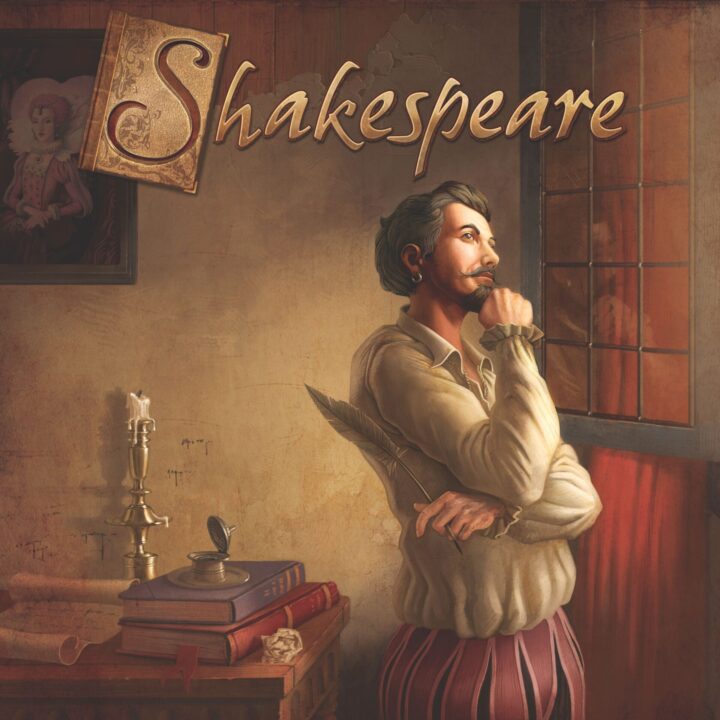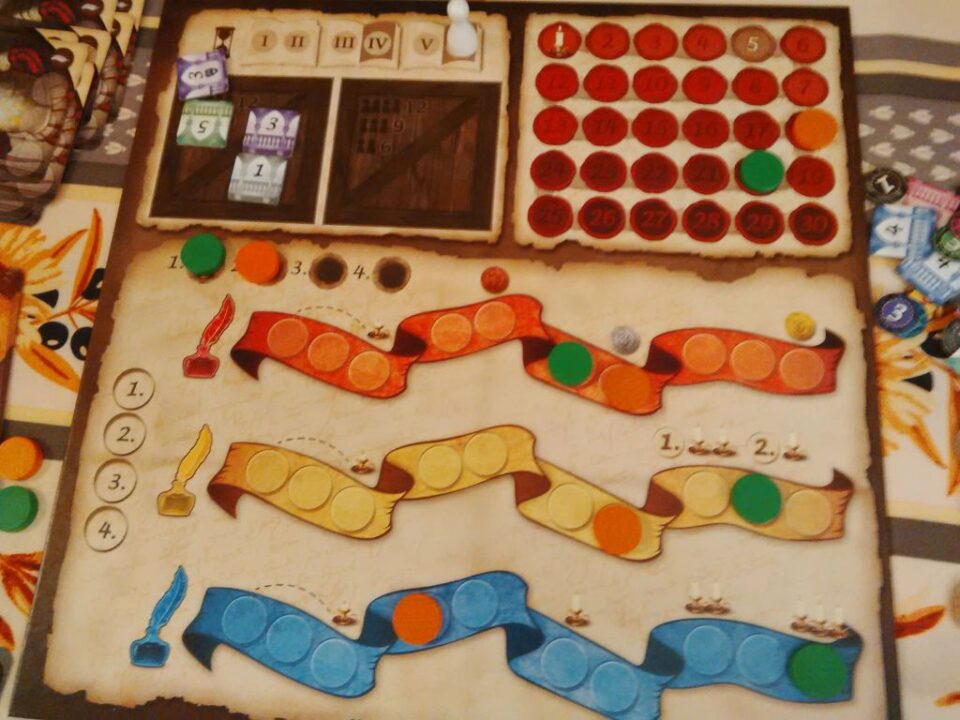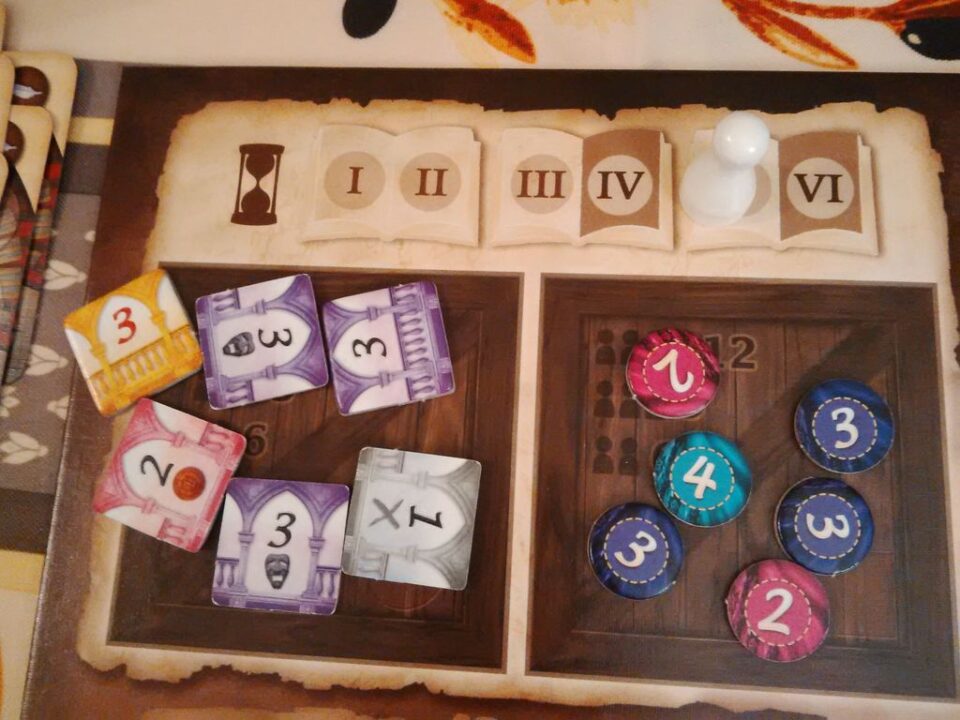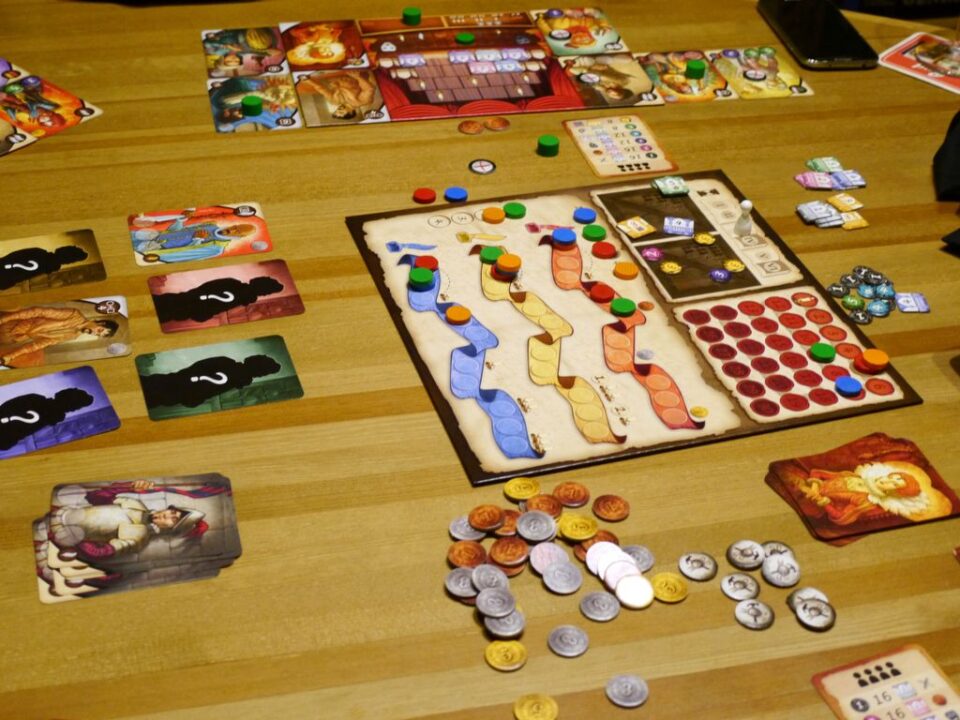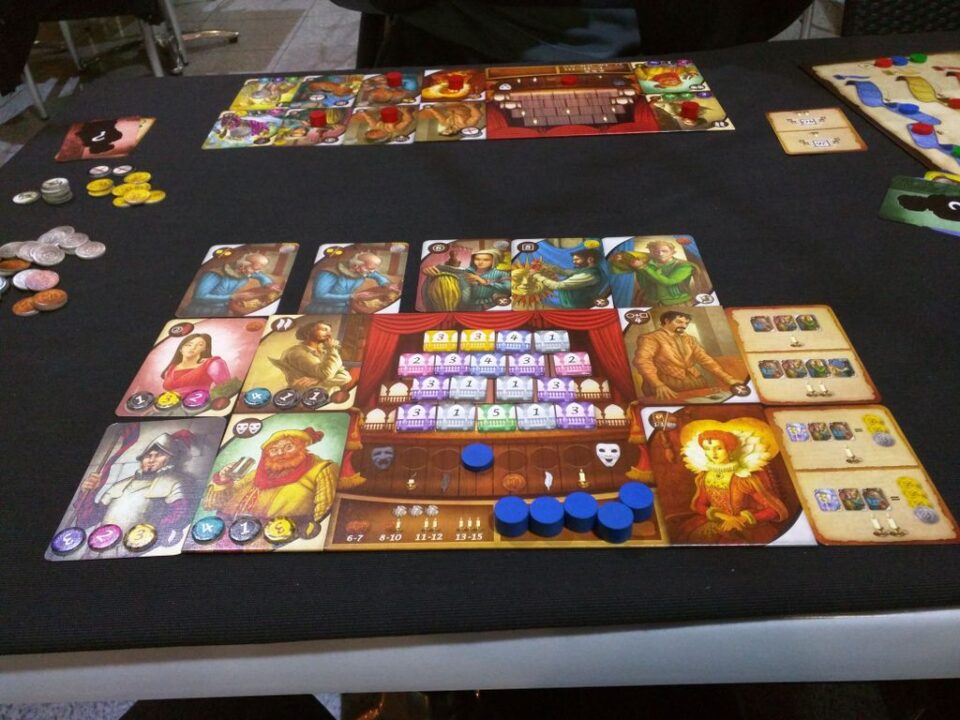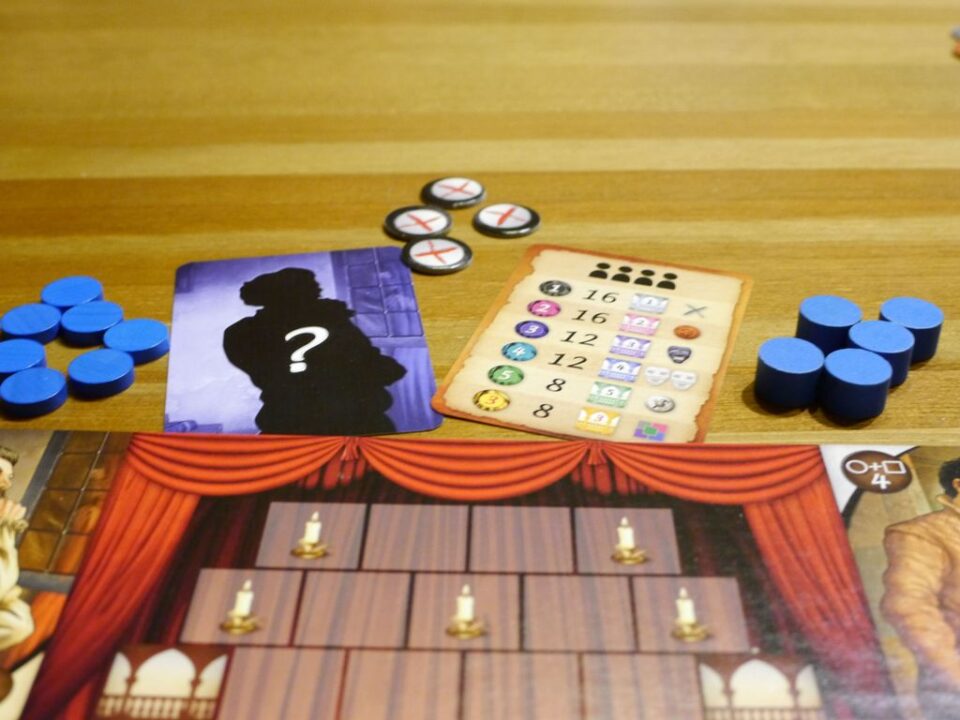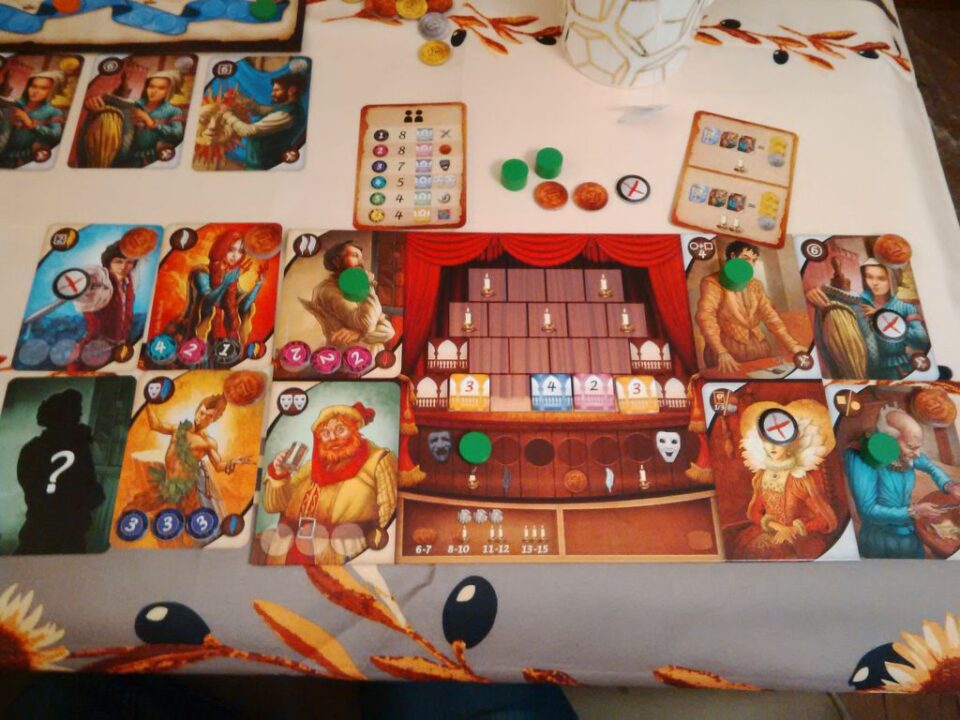Overview
Welcome to another board game rollercoaster with yours truly, Jamie! Today, I’m taking you through the twists and turns of ‘Shakespeare,’ a game that’s all about stepping into the shoes of a theatre troupe manager in the Elizabethan era. Yes, you heard it right; we’re diving deep (oops, not diving, more like leaping) into the world of the Bard himself. But worry not, this isn’t your high school English class. No, sir! This review will give you the lowdown on whether this game deserves a standing ovation or if it’s more of a tragedy than a comedy. So, grab your ruffs and your quills; it’s showtime!
How It Plays
Ever dreamt of being the head of a theatre troupe in the golden age of English drama? Well, ‘Shakespeare’ is your backstage pass to the hustle and bustle of Elizabethan theatre. Here’s a quick guide on how to set the stage, play your part, and maybe, just maybe, win the applause and secure victory.
Setting Up
First things first, lay out the board that represents your theatre. Each player picks a color and gets a matching set of actors, costume pieces, and set decorations. Shuffle the role cards and deal them out. Then, everyone takes turns drafting these cards to form their troupe. Place your actors and resources around your theatre. You’re now ready to raise the curtain on this dramatic affair!
Gameplay
The game unfolds over six rounds, each mimicking a day of intense preparation before the final performance. Every ‘day’, you’ll assign your actors to rehearse scenes or to acquire new costumes and set pieces, all in a bid to enhance your performance. But beware, resources are limited, and so is your time. You’ll need to manage both effectively, engaging in a tense balance of planning and improvising. Oh, and keep an eye on your rivals; they’re just as eager for the spotlight.
Winning the Game
As the final curtain falls, it’s judgment day. Points are tallied based on the quality of your performances, the splendor of your costumes, and the grandeur of your set, among other things. The player who best captivates the audience (and scores the most points) wins the game and eternal glory in the annals of theatre history. So, take a deep breath, the stage is set, the audience is waiting, and it’s your time to shine!
Want to know more? Read our extensive strategy guide for Shakespeare.
Exploring the Stage: Gameplay Mechanics and Thematic Integration in Shakespeare
When you sit down to play Shakespeare, you’re not just any director; you’re stepping into the bustling world of Elizabethan theatre. The game brilliantly marries its gameplay mechanics with the theme. Players recruit actors, craftsmen, and costume designers to put on the grandest show. Each choice feels like you’re making critical decisions for your theatre troupe. Unlike some games where theme feels slapped on, Shakespeare makes you genuinely feel the struggle and triumph of producing a play.
The turn-based actions mimic the planning and unpredictability of theatre life. Deciding how to allocate your limited resources between set construction, costume making, and rehearsals is a tightrope walk of strategic planning. It’s this seamless blend of theme and mechanics that sets Shakespeare apart, constantly keeping players engaged and immersed in the world of Renaissance drama.
Now, let’s turn the spotlight to the visual and tactile experience of the game, focusing on Artwork and components quality.
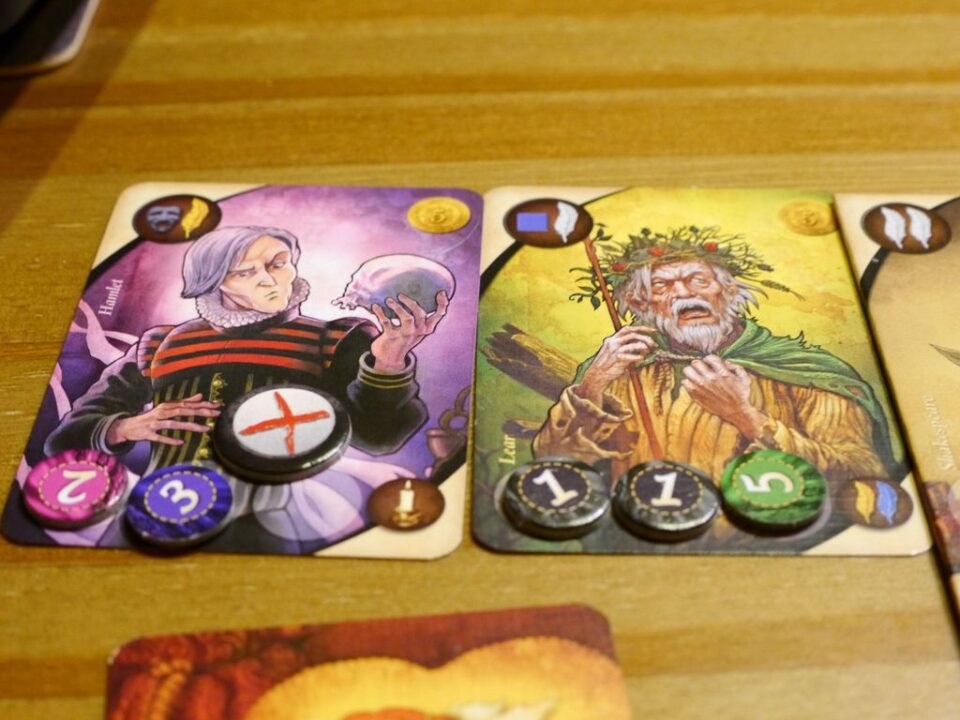
A Closer Look at Shakespeare’s Artwork and Component Quality
When you open Shakespeare, you’re hit with visuals that perfectly capture the essence of the Elizabethan era. The artwork isn’t just pretty; it does a fantastic job of immersing players right into the heart of 16th-century theatre life. Each character card, the board, and even the scenery components feel like they were plucked right out of a history book, but with a vibrant, lively twist. It’s clear the designers spent a lot of time making sure the game’s aesthetics matched its theme.
The components? Top-notch. Sturdy, well-crafted, and with the kind of attention to detail that makes setting up the game feel like you’re laying the foundation for a grand performance at the Globe Theatre. It’s evident that no corners were cut in bringing the world of Shakespeare to life on your dining table.
Now that we’ve applauded the splendid visuals and components, let’s raise the curtain on the play’s next act: Balance and strategy depth.

Mastering the Stage: Delving Into Balance and Strategic Depth in Shakespeare
Playing Shakespeare feels like you’re directing your very own Elizabethan masterpiece. Every decision counts, from choosing your cast to managing resources for costumes and sets. What stands out is the game’s balance. It’s finely tuned, so no player has an unfair advantage from the get-go. This is where strategy kicks in big time. You’ve got to think like a true playwright, planning your moves in advance and adapting to the unpredictable actions of your competitors. It’s a mental jousting match that feels rewarding and fair, ensuring that both newbies and board game veterans can enjoy the show on equal footing.
Strategy’s Role in Replay Value
This strategic depth not only makes Shakespeare captivating but also sets the stage for endless replay value and lively player interaction, which we’ll dive into next.
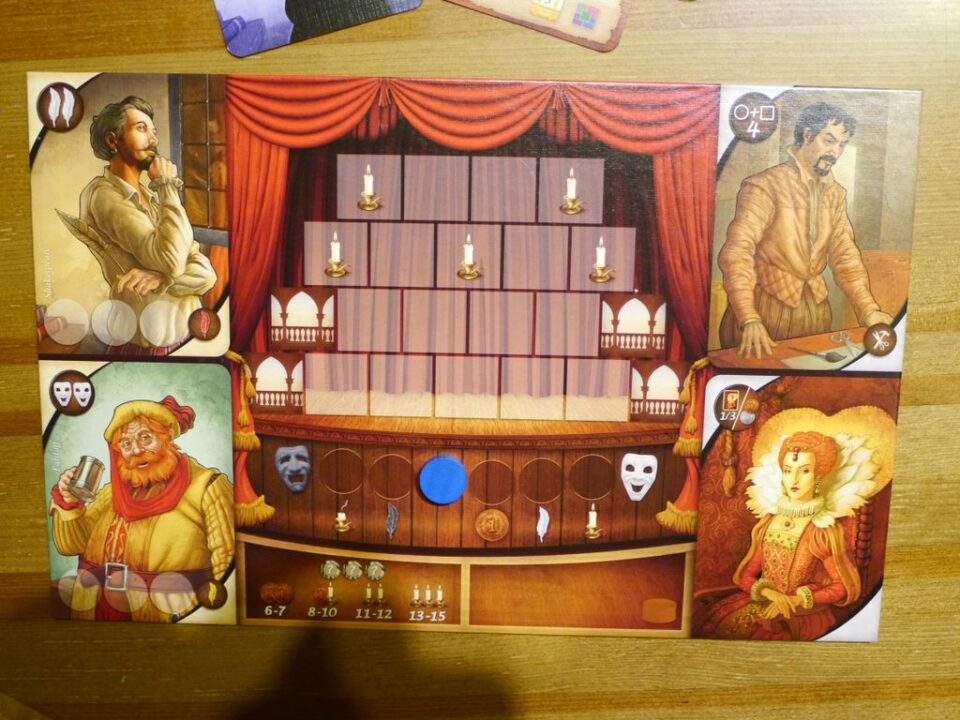
Why Shakespeare Never Gets Old: A Look at Replay Value and Player Interaction
Here’s the thing about Shakespeare – the board game, not the bard. Every time you play, it’s like you’re directing a new play with a fresh cast. The roles you assign, the set pieces you choose, it all makes for a different experience. That’s the beauty of it. The game has this knack for keeping you on your toes, thinking of new strategies, trying out different combinations to see what works best.
And let’s talk player interaction. You’re not just competing; you’re reacting, adapting, sometimes even subtly sabotaging (in the most friendly way, of course). It’s this interaction that keeps each game lively, engaging, and just plain fun. You won’t find yourself yawning halfway through, that’s for sure.
So, would I recommend Shakespeare? In a heartbeat. It’s not just a game; it’s an experience. One that keeps you coming back for more. Give it a try, and you might just find yourself with a newfound love for the Elizabethan theatre – board game style.
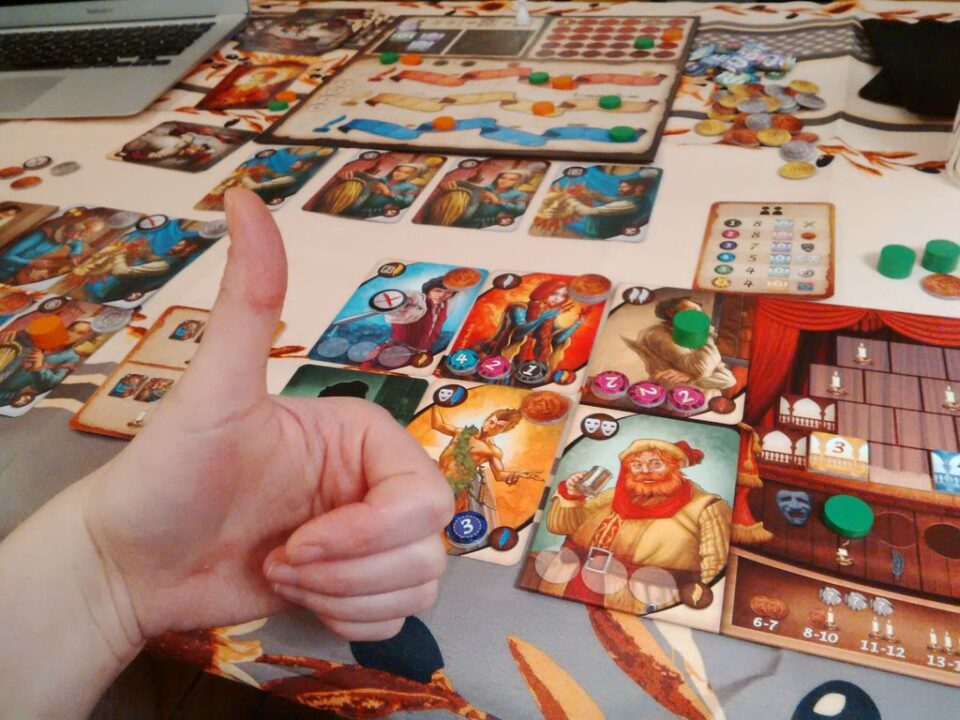
Conclusion
Wrapping up this walkthrough of the Shakespeare board game, it’s clear this game is a star-studded performance in its own right. From the historically rich artwork that transports you straight to the heart of the Elizabethan era, to the finely balanced mechanics that demand strategic prowess over mere luck, Shakespeare offers a deeply engaging experience. The game stands out not just for its thematic depth but also for its replay value, keeping players coming back for encore after encore. While strategizing to outdo your competitors in assembling the ultimate theatre troupe, you’ll find the game’s complexity and balance to create a fair stage for all players. However, it’s not without its minor setbacks. The initial learning curve may seem steep, and players looking for a quick, luck-driven game might find Shakespeare to be a bit of a bard to get through. Yet, for those willing to immerse themselves in the strategic intricacies of managing a theatre, Shakespeare proves to be an enlightening and entertaining journey back in time. A solid four-star rating from us, for its admirable blend of art, strategy, and historical immersion. Curtain call for this review, but the show will go on each time you bring Shakespeare to the table.

